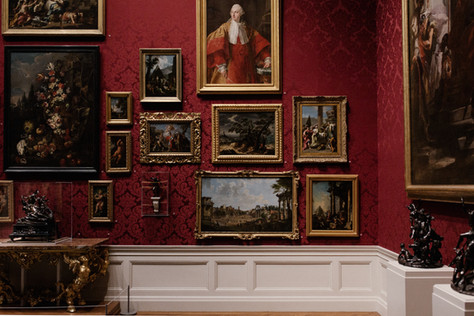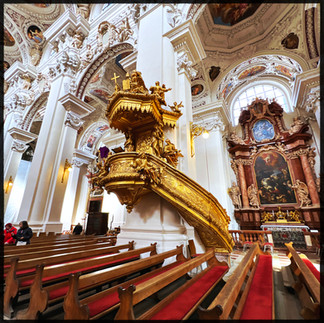
Europe is a living museum, a rich tapestry of art, history, and culture waiting to be explored. Whether you're an art aficionado, a history buff, a castle enthusiast, or someone looking to soak in the serenity of ancient worship places, Europe will enchant and inspire you. However, does it really mean anything if you don’t know what you’re seeing? Take a look at how you can prepare yourself and your family to get the most out of your experiences, and make impressions you’ll never forget. Prepared to be amazed!
1. Ancient Sites and Ruins


Climbing the Acropolis, communing with the druids at Stonehenge, strolling the Croatian shore in the shadow of Emperor Diocletian's palace in Split, tracing the intricate carvings on a Viking ship — the remnants of Europe's distant past bring a special thrill to those of us from the New World.
But the oldest sites are also the most likely to be initially underwhelming, especially if it's been a while since your last history class. On its own, the Roman Forum might seem like just a cluster of crumbling columns and half-buried foundations. You've heard about it all your life, spent good money to get there, and your first thought upon entering is…"This is it?" Honestly, there might be quite a few locations in Europe that you’ll feel this way……unless….you prepare.
Ancient sites come to life with your imagination, aided by information. Bring a guidebook heavy on historical background and consider hiring a local guide. Eager local guides often cluster outside major ancient sites like Delos in Greece and the Colosseum in Italy, but quality varies. Booking a reputable guide in advance is often preferable, but if you decide to choose one on the spot, talk to a few candidates first to ensure a good connection.
Before your trip, ignite your imagination by watching movies or reading books set in the time and place of any sites you're excited to see. Netflix, Prime Video, and Disney Plus (National Geographics) offer up many opportunities to learn more. My personal favorite is the Pompeii documentary on Disney Plus. Once you're there, mentally reconstruct arches and repaint facades. Visualize fellow tourists in togas and fill a ruined cathedral with the chants of cowled monks.
Many major ancient sites have both an archaeological site and a nearby museum full of artifacts unearthed there. You can choose to first visit the museum to mentally reconstruct the ruins before seeing them or start with the site to get the lay of the ancient land. Often, it's best to tour the air-conditioned museum during the heat of the day and explore the ruins in the early evening.
2. Museums
Europe is a treasure chest of great art and history. For some, visiting the world's greatest museums is the highlight of a European trip. For others, "museum" spells "dull." But you don't need to know how a Ferrari works to enjoy the ride. Paintings are like that; you can just stroll through a gallery and bask in the color scheme.
- Learn about art and history: When my kids were little and began our adventures in Europe, I would take the girls to the library and have them check out books about our destination. I may have taken a few naps in my history classes, but the kids were hungry for information on where we were going. And just like magic, while visiting our destinations the education really resonated with what the experience was all about. Pre-trip studying makes art and artifacts more engaging. When you understand the context in which things were made, who paid for them, and why, paintings and statues become a time machine.
- Don't miss the masterpieces: A great museum doesn’t consist only of masterpieces. With a tour guide or a guidebook, focus on just the top attractions. Most major museums provide brief pamphlets recommending a greatest-hits plan. Appreciate the highlights while you're fresh and, if you have any energy left, explore areas of specific interest.
- Find your favorites: Reconnaissance on the museum’s website or its collection handbook can line up your must-see targets. For example, I love Van Gogh’s work, and I saved myself the disappointment of missing a piece by checking the museum's resources in advance. Also, understanding that we do, and will make things bigger than they actually are, so don’t be disappointed when you see the Mona Lisa, or Starrynight!
- Eavesdrop: Of course, hiring a tour guide will give you the best experience, but if you don’t want to hire a guide, if you’re interested in a particular piece, spend a half hour studying it and listening to passing tour guides' stories. Different guides offer diverse angles, enriching your experience. Just don't stand in the front and ask a lot of questions.
3. Castles
Castles send the imagination soaring. Fortresses perch on hilltops from Ireland to Istanbul, and from Sweden to Spain. Storybook châteaux line the Loire River valley and walled strongholds guard harbors throughout the Mediterranean.
Tips for Visiting Castles:
Do your research: Check if tours are offered and if the castle is furnished.
Be prepared: Wear good walking shoes and bring a small flashlight for tunnels.
Learn the basics: Knowing the different parts of the castle can make your visit more enriching (e.g., the difference between a dungeon and a donjon).
Europe's castles generally fall into two categories: medieval fortresses (built to withstand sieges) and castle-palaces (luxury residences for royalty). From the 16th century through the 19th-century Romantic era, luxurious castle-palaces reached their zenith with the likes of Versailles and Villandry.
4. Churches, Synagogues, and Mosques

European houses of worship offer amazing art and architecture, plus a cool respite from the heat. Remember, these are active places of worship, so be respectful.
Tips for Visiting Sacred Spaces:
Dress modestly: No bare shoulders or shorts, and women need to cover their heads and wear clothing that shields legs and arms in mosques.
Observe local customs: Visitors may not be allowed inside during worship times.
Use coin-operated audio boxes: Many churches have these to describe the art and history. Let there be light!
If there is no entry fee, consider dropping a few Euros in the donation box.
One of my favorite experiences in Europe is attending mass whenever possible. These moments are serene and allow you to truly soak in the religious significance and history.
Europe is brimming with historical sites, art-filled museums, imposing castles, and sacred spaces that demand exploration. At Gotta Luv Travel, we ensure you "Experience the World your way." Ready to make your European dream trip a reality? Let’s plan your adventure together! 🌍✨
Bon voyage,
































Commenti